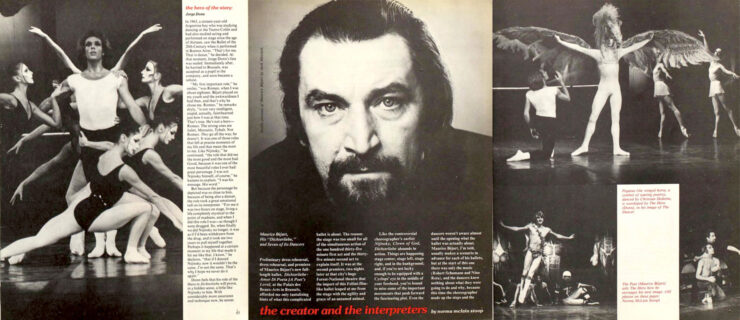Your Body
With Nutcracker-and-cold-weather season upon us, dancers face a warm-up challenge. Staying ready to dance through a chilly day may take a little extra motivation, but an active warm-up before class, rehearsals and performing will keep your muscles supple. Be ready to spend a little time. You want to get your heart rate up, move on to some core work, then focus on limbs and feet. A proper warmup should target the muscles you are going to use during the day, says Alison Deleget, clinical specialist with the Harkness Center for Dance Injuries at the NYU Hospital for Joint Diseases. While every dancer has a different routine, here are a few basics.
Get Moving
Don’t start with deep splits (“Your Body,” Nov.). It’s classic warmup malpractice, and even more risky when your muscles are stiff from the cold. Start with bumping up your heart rate, says Paul Papoutsakis, company athletic therapist for The National Ballet of Canada. “A brisk walk around increases blood flow, which improves elasticity in the muscles and range of motion,” he says. Keep your sneakers on for a few minutes and pace the studio, or do small jumps in place.
Right to the Core
Abdominal exercises increase strength and prepare your body for what lies ahead. Deleget suggess doing a Pilates series before class. Start with 10 small, slow crunches while lying on your back, keeping the abdominals flattened with your hands behind your head without pulling on your neck. Then do the five beginning exercises from a classic Pilates class: hundreds, roll-up, single-leg stretch, double-leg stretch, and singles straight leg stretch. Keep in mind that a strong core also helps you stayed aligned even when you’re tired, which will protect you from injury.
The cat stretch is a favorite of Elise Drew, dancer with Chicago’s Luna Negra Dance Theater. She feels it gets her pelvis and spine moving. Go on all fours, imagining a long line parallel to the floor extending out the top of your head and through your tailbone. Then round the spine slowly (like a scared cat), breathe in, and return to the original table position while exhaling. Repeat several times, and then arch the spine, raising your head and tailbone towards the ceiling. This increases range of motion in the spine, neck, and pelvis, and creates an awareness of a well-aligned spine.
On Your Feet
During the course of a day, dancers stand, spin, slide, and do everything imaginable on their feet. So don’t forget about them during a warm-up! Delegat recommends spelling the alphabet with your feet, which strengthens ankles and feet better than traditional circles. Do it lying on your back, sitting on the subway, or if time runs short, standing at the barre during class.
Another exercise, which both Delegat and Papoutsakis recommend for all dancers, involves a theraband. Try to point and flex 20 times with the band around the ball of the foot, pulling both ends of the band tight. Be sure to keep resisting the band on the flex. For a bonus, hold the point in the ankle, and then for 10-15 times point and flex only the toes. Repeat on the other foot. Then do 20 eversions (winging) and 20 inversions (sickling) on both sides. Although this adds time to the warm-up, it will protect yours ankles. Only when you’re adequately warm from core to extremities are you ready for some light stretching.
Dress Smart
Dancers are notorious for wearing layer upon layer of legwarmers and sweats. Layers help get body temperature up, and keep you warm during breaks, but don’t forget to shed as you get moving. “Breathable materials matter most,” says Papoutsakis. “Non-porous plastic pants may make you sweat too much.” While cotton leads when it comes to breathable, cotton-polyester blends dry much faster. Especially in winter, you don’t want to go outside in sweaty rehearsal clothes. Remember, exposure to cold temperatures causes muscle tightness.
Train delays, alarm malfunctions, exhaustion—dancers have a million excuses for not allowing enough time for an adequate pre-class warm up. When Drew got stuck on a train and missed the beginning of company ballet class, she felt disconnected and on edge. “Being cold is a different mental state, and I’m in pain for most of the barre,” says Drew. “When I’m warm, I move bigger and it’s a full body experience.” Coming to class or rehearsal cold is like taking a test unprepared, only instead of missing a question, you could miss a step and cause an injury. A consistent, vigorous warm-up is your secret weapon.
Jen Peters dances with Jennifer Muller/The Works.





